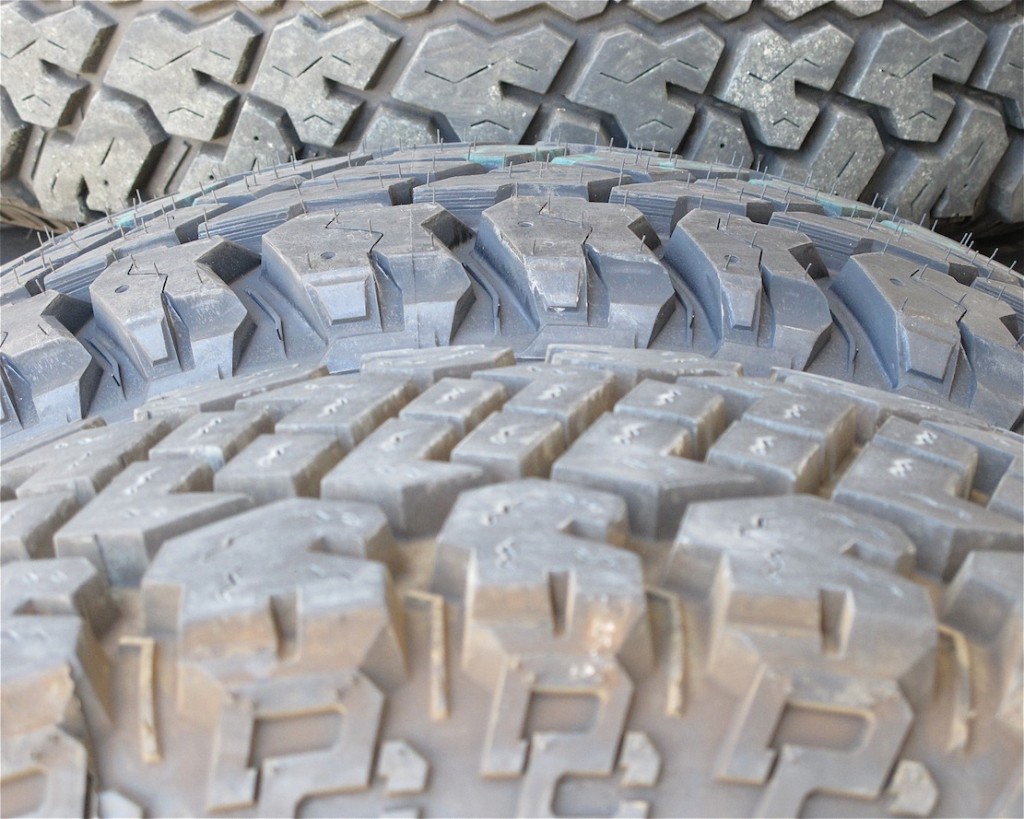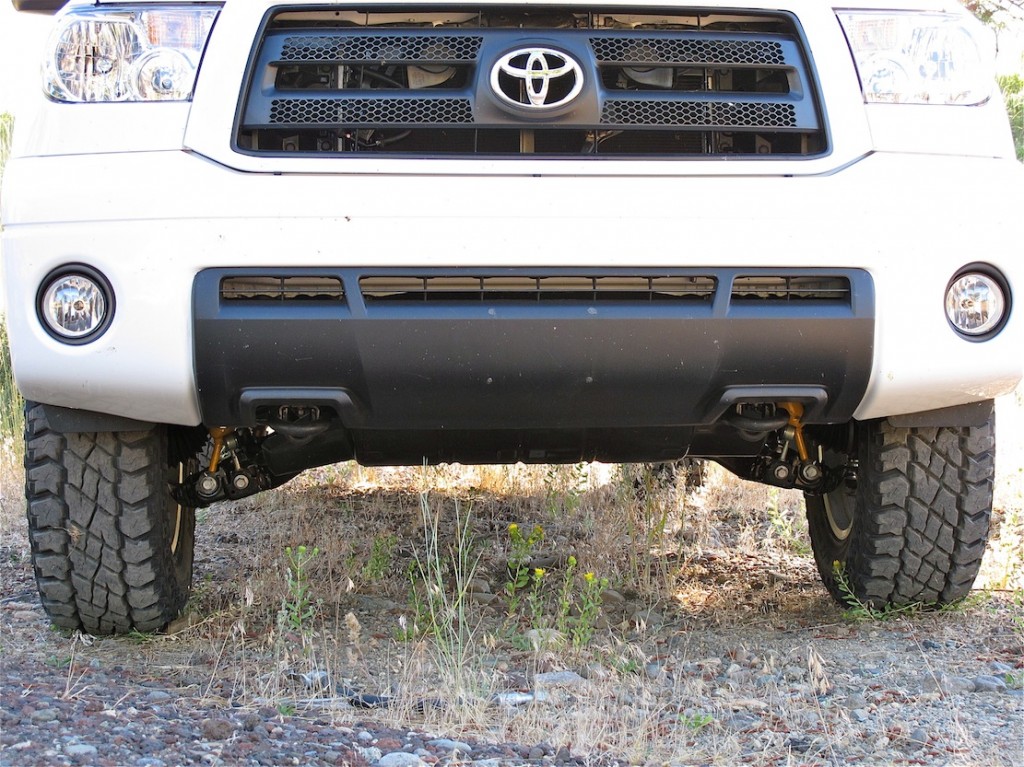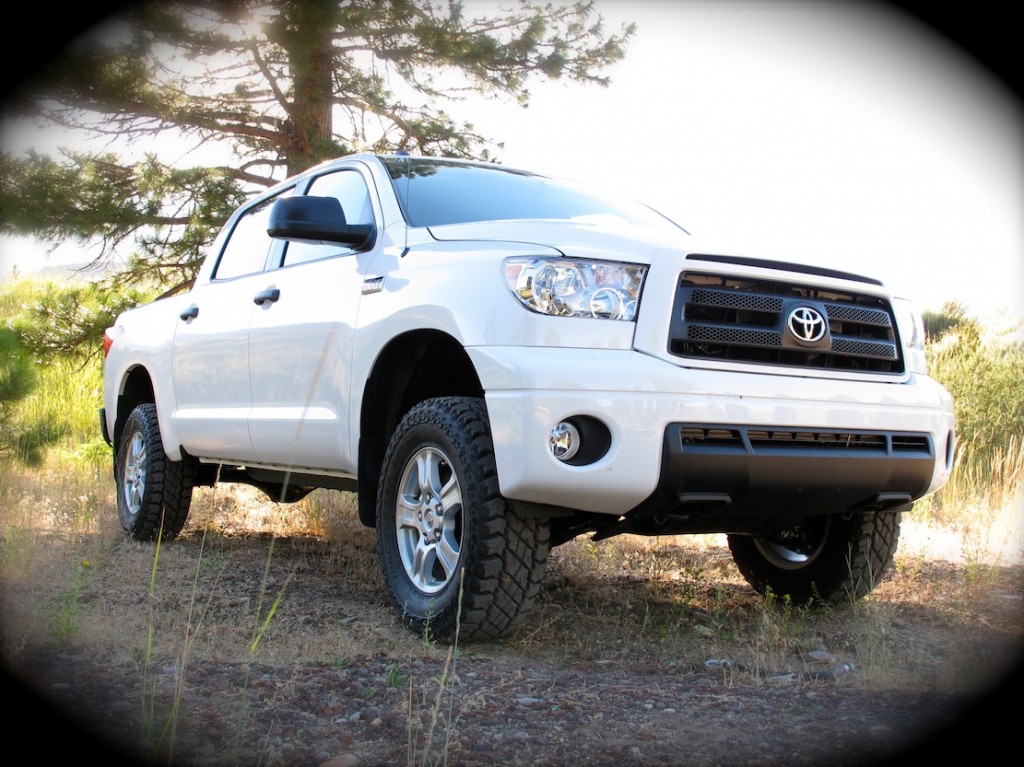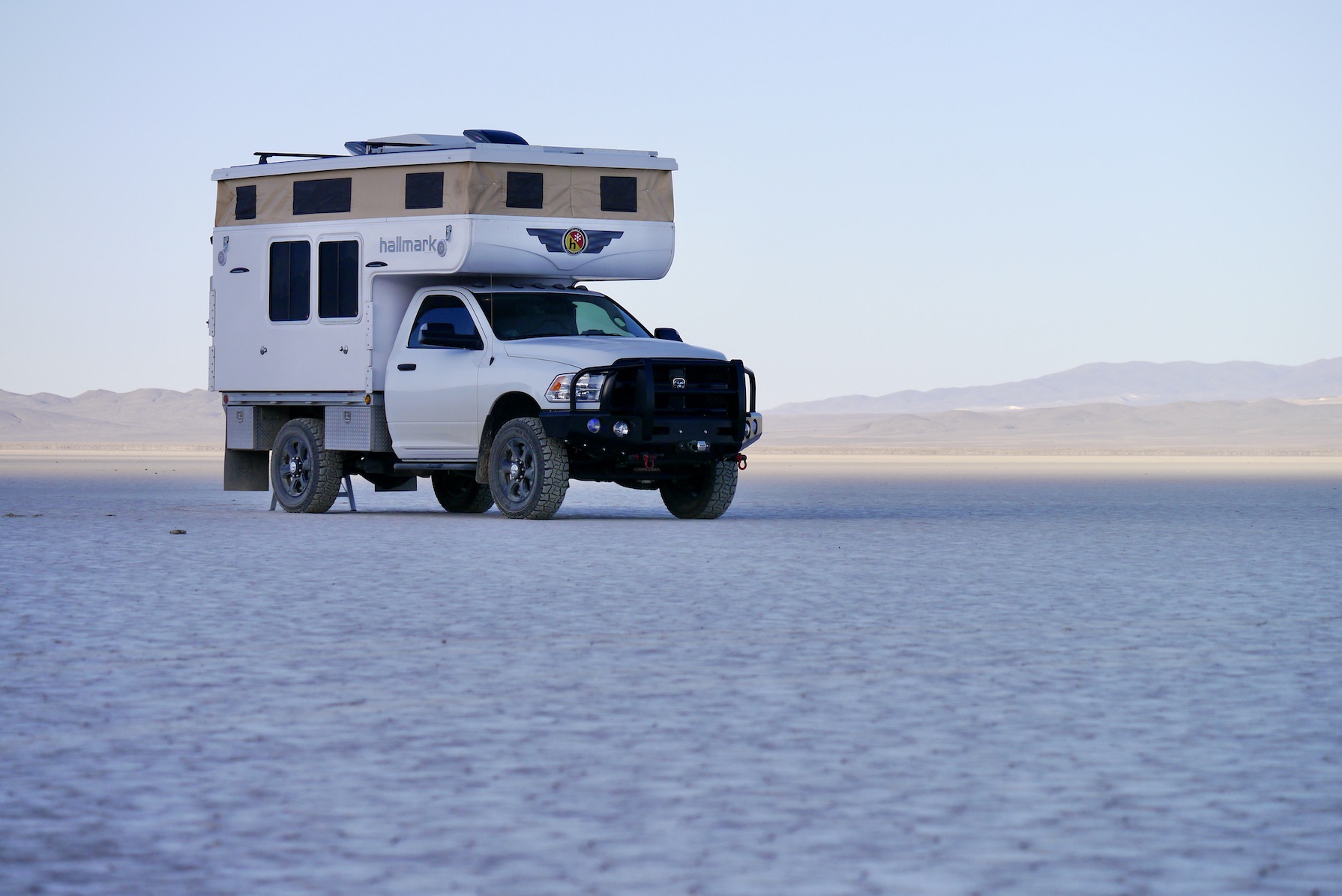A Minor Lift
All thirty-threes are not created equal, because they’re not all exactly thirty-three inches tall. The very common 285s are typically 32.8-inches tall while 255/85R16s are almost always 33.3+ inches; the Toyo M/T is 33.5-inches! Removing the Dick Cepek F-C II 17-inch 285s, slapping-on the 18-inch Cooper S/T MAXXs, and taking a few measurements showed that the taller 275/70R18 MAXXs were good for 3/16″ of additional clearance under the rear differential. Nice.
My initial S/T MAXX drive was on a test loop I typically travel after any tire, wheel, air pressure, alignment, or other drivability changes are implemented. It’s several miles long and includes city streets, rural highway, interstate freeway, and sometimes just a minuscule amount of dirt for photos. The route and terrain are familiar, as is the vehicle platform, what’s being evaluated is the change, in this case, tires.

Noise
What noise? Articulating tire noise can be a challenge, as vehicles have different levels of insulation and sound deadening, and drivers have their biases and tolerance or lack thereof for noise. With several back-to-back tire tests under my belt the S/T MAXX is clearly one of the quietest traction tires I’ve ever had the pleasure to drive on. The volume and tone is similar to my beloved Dick Cepek F-C II, but a bit quieter, and the MAXX is certainly quieter than the standard Cooper S/T. Comparing the S/T MAXX to the super popular BF Goodrich A/T is tough. While I currently have a set of used BFG A/Ts, I have few personal miles on them and I’m not a BFG A/T fan. I’ll go out on a strong limb and say the new S/T MAXXs are louder than the BFG A/T, but not much. For a tire that offers as much traction and void (much more than the BF Goodrich A/T) the Cooper S/T MAXX is an amazingly quiet tire and well worth the little noise it makes.

Stiff
As noted in my introduction, the ArmorTek3® carcass construction and 3-ply sidewalls of the S/T MAXX are stiff. This can be great if this is a feature you are looking for, or a negative if you prefer a more compliant ride and/or a lighter tire. (If you are new to this blog or subject, read Wheels, Tires, and Sidewalls from Jan. 30, 2012.) In addition to the intentionally rugged design of the S/T MAXX, using 18-inch wheels with only a 33-inch tire adds to the lack of sidewall flex.
One of my strong dislikes for tall wheels on light-trucks is manifested by this situation: a relatively tall tire (33+), with a relatively short sidewall doesn’t offer the same off-highway flex and performance available from a taller sidewall. The same height tire on a 16-inch rim would yield an additional inch of sidewall to drive and flex on; this is not a small difference. If you already use and like the firmness of a load-range E sidewalls then the stiffness of the S/T MAXX (similar to the Toyo M/T) may not bother you, particularly if you don’t have to run it on a tall wheel. However, if you prefer a more compliant ride or a lighter tire you might reconsider the MAXX. What do you want, and what do you need for your application?

Pulling To The Right
Several years ago I rarely experienced tire pull problems with my trucks, however they are all live-axle 4WDs. Starting with my 2006 V8 4Runner and now continuing with this Tundra, I’ve experienced a pull (or drift) to the right with certain tires but not with others. Both of these IFS four-wheel-drives have alignment settings and geometry that are equal to or better than when new.
Aftermarket upper-control-arms are employed and expertly adjusted, though invariably some tires cause a very noticeable drift or pull to the right. I’ve spent countless hours and dollars to try and understand, identify, and combat this situation on these Toyota 4WDs. In short, my work involved many trial-and-error alignment adjustments, tire & wheels swaps, rotations, and tire pressure changes, all of which did not correct the problem. Some tires would still pull right, some terribly so.
How bad is the pull or drift? On a straight section of freeway with little road crown, at 65 miles-per-hour, releasing the steering wheel will result in crossing the right lane-line in about 3-seconds. Three seconds! I’m a strong advocate of keeping one, if not two hands on the wheel, and paying attention to the task at hand when driving. But I also like my vehicles to have very neutral handling, heading straight down the road unless instructed otherwise. Modified or not, I require my vehicles to drive almost perfectly on-highway. For comparison, depending on the road, wind, and other variables, with the same alignment settings Dick Cepek F-C II tires would continue straight for 8–10 seconds with no-hands.
Some readers may observe that the wheels are not identical. OE 17-inch forged TRD wheels are being used for the F-C II, while the MAXXs are mounted on 18-inch SR5 wheels, and there is probably a slight difference in backspacing. Is that part of the problem? I doubt it, though I did consider of this difference, and have a plan.
After an interlude, there will be more Cooper S/T MAXX commentary in the future—first we have to drive there.

RoadTraveler.net – Rollin’ Forward
Copyright © 2012 James Langan

The tires look great. Its too bad that they are so heavy. I like the width. I’d consider that size in a load range D or C tire.3 Do you have any pictures of the ST MAXX next to the FCIIs or other 285s? Is the width difference noticable? Or is one better off to just stick with the wide selection available in a 285.
Is the width difference noticeable between these different 285s? Not really, they are all pretty close.
As detailed in one of my recent posts, I’m a big fan of load-range D tires where a load-range E is not needed. At least for now the Dick Cepek F-C II in a 285 is a load-range D tire. BFG also offers their all-terrain in a load-range D.
Very disappointing about the drift issue. Will an attempt be made to correct for this? The photos are impressive. The second one from the top looks great. Good luck with reducing/eliminating the dreaded drift…